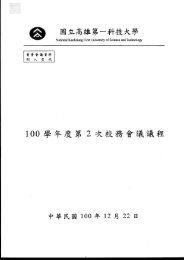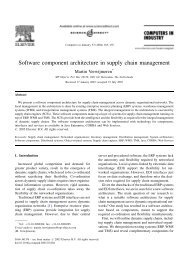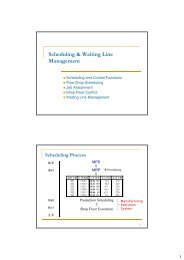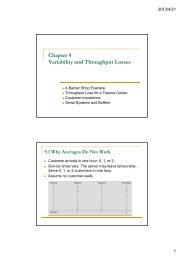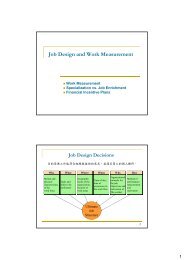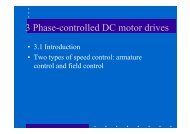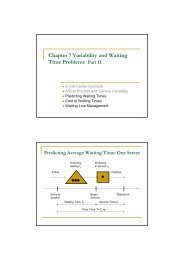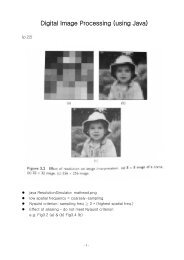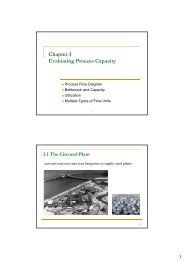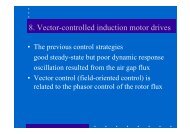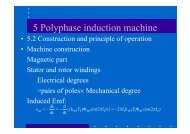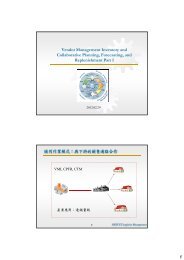Chapter 6 Scaling Laws in Miniaturization
Chapter 6 Scaling Laws in Miniaturization
Chapter 6 Scaling Laws in Miniaturization
You also want an ePaper? Increase the reach of your titles
YUMPU automatically turns print PDFs into web optimized ePapers that Google loves.
nearly as favorably as electrostatic forces.- The electromagnetic forces can be <strong>in</strong>duced <strong>in</strong> a conductor or aconduct<strong>in</strong>g loop <strong>in</strong> a magnetic field B by pass<strong>in</strong>g current i <strong>in</strong> theconductor.- The electromotive force (emf) is the force that drives the electrons-through the conductor.21 φU = (6.13)2 Lwhere φ is the magnetic flux, and L is the <strong>in</strong>ductance.- S<strong>in</strong>ce φ = Li ,1 Li2U =2(6.14)- The <strong>in</strong>duced electromagnetic force would be∂UF =∂x- For constant current case,φ=cons tan ti=cons tan t(6.15a)∂UF = (6.15b)∂x1F = i22∂L∂x20S<strong>in</strong>ce i ∝ l and ∂L/ ∂x∝ l ,4F ∝ l- If 10 times reduction <strong>in</strong> size (l)⇒ Electromagnetic force: 10,000 times reductionComparison: Electrostatic force: only 100 times reductionConclusion: Electromagnetic force is less favorable <strong>in</strong> scale-down thanElectromagnetic force.6.6 <strong>Scal<strong>in</strong>g</strong> <strong>in</strong> Electricity• Examples: Microsystem actuation by electrostatic, piezoelectric, and thermalresistance heat<strong>in</strong>g.• Electric Resistance:LA−1R = ρ ∝ l(6.18)where ρ, L, and A are the resistivity, length, and cross-sectional area, respectively.• Electric Power Loss:PVR21= ∝ l(6.19)7



